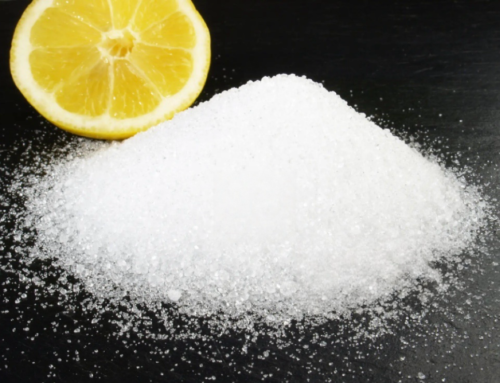 Water is an essential component in food processing, impacting texture, flavor, and overall quality. To optimize moisture retention, food manufacturers often turn to water holding agents. Among these agents, phosphates have emerged as a popular choice due to their unique properties. In this blog, we will explore the role of phosphates as water holding agents and delve into the advantages of blended phosphates over monomer phosphates in food processing applications.
Water is an essential component in food processing, impacting texture, flavor, and overall quality. To optimize moisture retention, food manufacturers often turn to water holding agents. Among these agents, phosphates have emerged as a popular choice due to their unique properties. In this blog, we will explore the role of phosphates as water holding agents and delve into the advantages of blended phosphates over monomer phosphates in food processing applications.
Understanding Phosphates as Water Holding Agents
Phosphates, compounds containing phosphorous and oxygen, have demonstrated their effectiveness in retaining water and improving the functional properties of food products. Their ability to bind and hold water molecules is crucial in preserving moisture, enhancing juiciness, and preventing undesirable textural changes such as dryness or crumbling.
There are lots of monomer phosphates that can be used as water holding agents, such as sodium phosphate monobasic (NaH2PO4), sodium phosphate dibasic (Na2HPO4), sodium tripolyphosphate(Na5P3O10) and sodium hexametaphosphate((NaPO3)6), are individual phosphate salts that have been traditionally used as water holding agents in food processing. These monomer phosphates provide some benefits in terms of water retention and pH control. However, their performance can be enhanced by blending them with other phosphates.
The Advantages of Blended Phosphates
Blended phosphates, created by combining different monomer phosphates in specific ratios, offer several advantages that make them superior to their monomer counterparts:
-
Enhanced Water Binding Capacity
Blended phosphates, including the combination of sodium phosphate monobasic and sodium phosphate dibasic, exhibit increased water binding capacity compared to monomer phosphates alone. The synergistic effect of blending different phosphates creates a network structure that allows for better water retention, resulting in improved juiciness and overall moisture content in processed foods.
-
pH Control and Buffering
Blended phosphates provide better pH control and buffering capabilities compared to monomer phosphates alone. The combination of different phosphates in a blended formulation helps maintain the desired pH range in food systems, which is crucial for achieving optimal texture, flavor, and stability. This is particularly important in products like cured meats, processed cheeses, and bakery goods.
-
Improved Emulsification and Texture
Blended phosphates, such as the combination of sodium phosphate monobasic and sodium phosphate dibasic, contribute to improved emulsification properties, resulting in better stability and texture in emulsified products such as sausages, dressings, and spreads. The balanced combination of phosphates facilitates the formation and stabilization of emulsions, enhancing product quality and mouthfeel.
-
Customizable Formulations
Blended phosphates offer flexibility in formulation, allowing food manufacturers to tailor the composition to specific product requirements. By adjusting the ratios of individual phosphates, such as sodium phosphate monobasic and sodium phosphate dibasic, manufacturers can achieve desired water holding properties, texture, and sensory attributes in their food products.
Blended Phosphate Used As Water Holding Agent In Many Applications
For Meat Process
Moisture retention: Maintain or increase the weight of the product, due to its ability to maintain water content.
Improve Texture: Produces a soft and chewy product texture with a taste and juiciness that remains natural after the cooking process.
Reduce water loss: Reduce water losses during thawing, cooking, and packing so as to increase profits.
For more details, please check Food Additives For Meat And Poultry Processing.
For Seafood Process
Moisture retention: The water holding agent in seafood can absorb and retain moisture, preventing seafood from losing moisture prematurely. This helps maintain the moistness and moisture content of the seafood, preventing dryness and dehydration, while increasing the tenderness and texture of the seafood.
Reduce nutrient loss: During seafood processing and cooking, some nutrients may be lost with water loss. Appropriate use of water holding agents can reduce the loss of nutrients and maintain the nutritional value and flavor of seafood.
Extended shelf life: Water holding agents help extend the shelf life of seafood. They can form a protective layer of water, slowing down the evaporation and oxidation of water, thereby delaying the deterioration process of seafood and prolonging its freshness period.
For more details, please check Food Additives For Seafood Processing.
For Dairy Process
Moisture retention: The water-retaining agents in cheese absorb and hold water, preventing the cheese from losing too much water. This helps keep the cheese moist and prevents it from drying out and hardening, while adding mouthfeel and texture to the cheese.
Improve stability: Water retaining agents in cheese can improve the stability of cheese and extend its shelf life. They can form a network structure of water, stabilize the structure of cheese, reduce the release and interaction of water, so as to maintain the shape and quality of cheese.
Control cream separation: Proper use of water holding agents can reduce cream separation and improve cheese uniformity and stability.
For more details, please check Food Additives For Cheese And Dairy Processing.
For Bakery Process
Moisture retention: Water holding agents in baking can absorb and retain moisture, preventing excessive dehydration and drying of the dough. This helps to maintain the moistness and elasticity of the dough, prevents the product from drying out and compacting, and at the same time increases the softness and mouthfeel of the product.
Increase volume and fluffiness: The water holding agent can form air bubbles in the dough through the property of water absorption and swelling, and increase the volume and fluffiness of the dough. This makes baked products fluffier, lighter, and richer.
Extend the shelf life: water holding agent can delay the evaporation of water in the dough and the deterioration process of the product, thereby prolonging the preservation period of baked products. They form a protective layer that prevents the loss of moisture and the ingress of air, maintaining the moistness and taste of the product.
For more details, please check Food Additives For Bakery Processing.
Conclusion
Water holding agents, particularly phosphates such as sodium phosphate monobasic, sodium phosphate dibasic, sodium tripolyphosphate, and sodium hexametaphosphate, play a crucial role in maintaining moisture and enhancing the overall quality of processed foods. While monomer phosphates have been traditionally used, blending different phosphates offers distinct advantages in terms of water binding capacity, pH control, emulsification, and formulation flexibility. These benefits make blended phosphates, including the combination of sodium phosphate monobasic and sodium phosphate dibasic, a preferred choice for food manufacturers seeking to optimize moisture retention and improve the sensory attributes of their products.
By harnessing the power of blended phosphates as water holding agents, the food industry can continue to innovate and deliver products that delight consumers with their taste.




